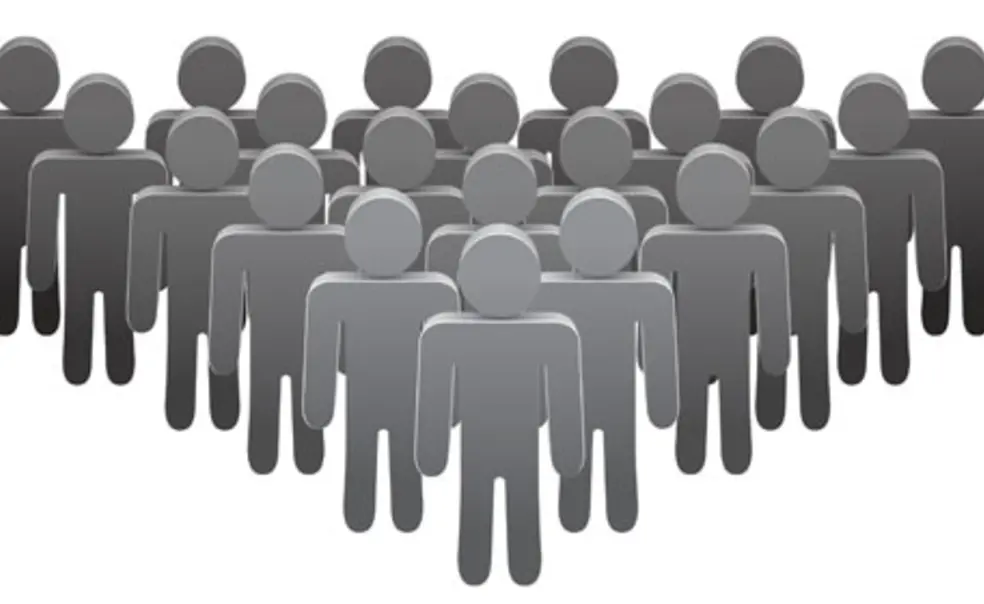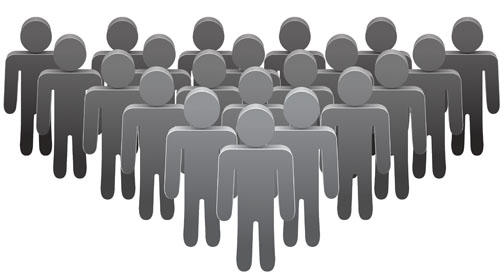Major trends: Math is hot; decline for social sciences
The number of Princeton undergraduates majoring in mathematics has risen by 85 percent over the last eight years, while the number majoring in the social sciences and humanities has declined, according to Dean of the College Valerie Smith.
Smith gave an update on the Major Choices Initiative, which was begun in 2004 by her predecessor, Nancy Weiss Malkiel, to encourage students to consider less popular fields of academic concentration. The Major Choices website urges students to “study what you love” and debunks myths about majors, including “If I choose the wrong major, I won’t get a good job” and “The larger departments are best for law school applicants.”
In a series of charts and graphs presented at the March meeting of the Council of the Princeton University Community, Smith documented broad trends in selecting majors over the past decade. The percentage of students choosing to concentrate in the social sciences declined from a peak of 43 percent in 2004 to 38 percent in 2011, while the percentage concentrating in the humanities declined from 23 percent in 2001 to 19 percent in 2011. The percentage of students concentrating in engineering has remained roughly the same, at about 19 percent of the class.
On the other hand, the percentage of students majoring in mathematics and the natural sciences has risen significantly, from 18 percent of the class in 2001 to 24 percent in 2011.
Leading the way has been the math department, which aggressively has courted new students and has seen the number of majors rise from about 12 per year a decade ago to 40 today. The department has made an effort to improve introductory mathematics courses and offered some new, lower-level courses, such as “The Magic of Numbers” and “Math Alive,” to attract more students.
“That department really went out of its way to attract students into the major in greater numbers than they have in the past,” said President Tilghman, who also attended the CPUC meeting. “So there are strategies, and those strategies do work.”
As the department broadens the areas of courses it offers, said math department chairwoman Alice Chang, “we expect that we will attract students interested in diversified branches — in both pure and applied subjects — of mathematics.”
Economics remains the most popular undergraduate major, attracting 134 students from the Class of 2014, followed by politics (115), the Woodrow Wilson School of Public and International Affairs (85), and evolutionary biology (74). At the other end of the scale, fewer than 10 students each year major in German or astrophysical sciences.
Numbers fluctuate from year to year, however, sometimes dramatically. The history department, for example, drew 80 students from the Class of 2012, 56 from the Class of 2013, and 75 from the Class of 2014. The number of sophomores concentrating in sociology dropped from 53 in the Class of 2013 to 24 in the Class of 2014.
The number of Princeton undergraduates majoring in mathematics has risen by 85 percent over the last eight years, while the number majoring in the social sciences and humanities has declined, according to Dean of the College Valerie Smith.
Smith gave an update on the Major Choices Initiative, which was begun in 2004 by her predecessor, Nancy Weiss Malkiel, to encourage students to consider less popular fields of academic concentration. The Major Choices website urges students to “study what you love” and debunks myths about majors, including “If I choose the wrong major, I won’t get a good job” and “The larger departments are best for law school applicants.”
In a series of charts and graphs presented at the March meeting of the Council of the Princeton University Community, Smith documented broad trends in selecting majors over the past decade. The percentage of students choosing to concentrate in the social sciences declined from a peak of 43 percent in 2004 to 38 percent in 2011, while the percentage concentrating in the humanities declined from 23 percent in 2001 to 19 percent in 2011. The percentage of students concentrating in engineering has remained roughly the same, at about 19 percent of the class.
On the other hand, the percentage of students majoring in mathematics and the natural sciences has risen significantly, from 18 percent of the class in 2001 to 24 percent in 2011.
Leading the way has been the math department, which aggressively has courted new students and has seen the number of majors rise from about 12 per year a decade ago to 40 today. The department has made an effort to improve introductory mathematics courses and offered some new, lower-level courses, such as “The Magic of Numbers” and “Math Alive,” to attract more students.
“That department really went out of its way to attract students into the major in greater numbers than they have in the past,” said President Tilghman, who also attended the CPUC meeting. “So there are strategies, and those strategies do work.”
As the department broadens the areas of courses it offers, said math department chairwoman Alice Chang, “we expect that we will attract students interested in diversified branches — in both pure and applied subjects — of mathematics.”
Economics remains the most popular undergraduate major, attracting 134 students from the Class of 2014, followed by politics (115), the Woodrow Wilson School of Public and International Affairs (85), and evolutionary biology (74). At the other end of the scale, fewer than 10 students each year major in German or astrophysical sciences.
Numbers fluctuate from year to year, however, sometimes dramatically. The history department, for example, drew 80 students from the Class of 2012, 56 from the Class of 2013, and 75 from the Class of 2014. The number of sophomores concentrating in sociology dropped from 53 in the Class of 2013 to 24 in the Class of 2014.
THE MOST AND LEAST POPULAR MAJORS: CLASS OF 2011
LARGEST
- Economics: 129 students
- Politics: 111 students
- History: 88 students
- Woodrow Wilson School: 85 students
- ORFE: 66 students
SMALLEST
- Slavic languages and literatures: 2 students
- Geosciences: 5 students
- German: 6 students
- Astrophysical sciences: 8 students
- TIE: Computer science (A.B.);
- East Asian studies: 10 students each
Source: Registrar’s office
Although Smith believes that the Major Choices Initiative has succeeded in encouraging students to consider less traditional majors, she cautioned that other factors affect concentration preferences, many of which are beyond the administration’s control. The number of students who indicated on their admission application that they intended to major in English, for example, has declined significantly over the last decade. Smith also acknowledged that the slow economy and weak job market may prompt students to major in fields that they believe will make them more attractive to potential employers.
Roughly 80 percent of seniors indicated last year that they were either very satisfied or generally satisfied with their choice of major, according to the senior survey, although the number of seniors who said that they were ambivalent or dissatisfied also rose slightly. Overall, 87 percent of Princeton students say they are satisfied with their academic experience.
Smith added that it is unclear how changes in prerequisites for prospective Wilson School and economics majors will affect not only those departments but others, such as history and politics. Starting with the Class of 2015, admission to the Wilson School no longer will be selective, but students will be required to have completed courses in microeconomics, statistics, history, and either politics, sociology, or psychology. Students who intend to major in economics will be required to have completed “Mathematics for Economists.”














No responses yet